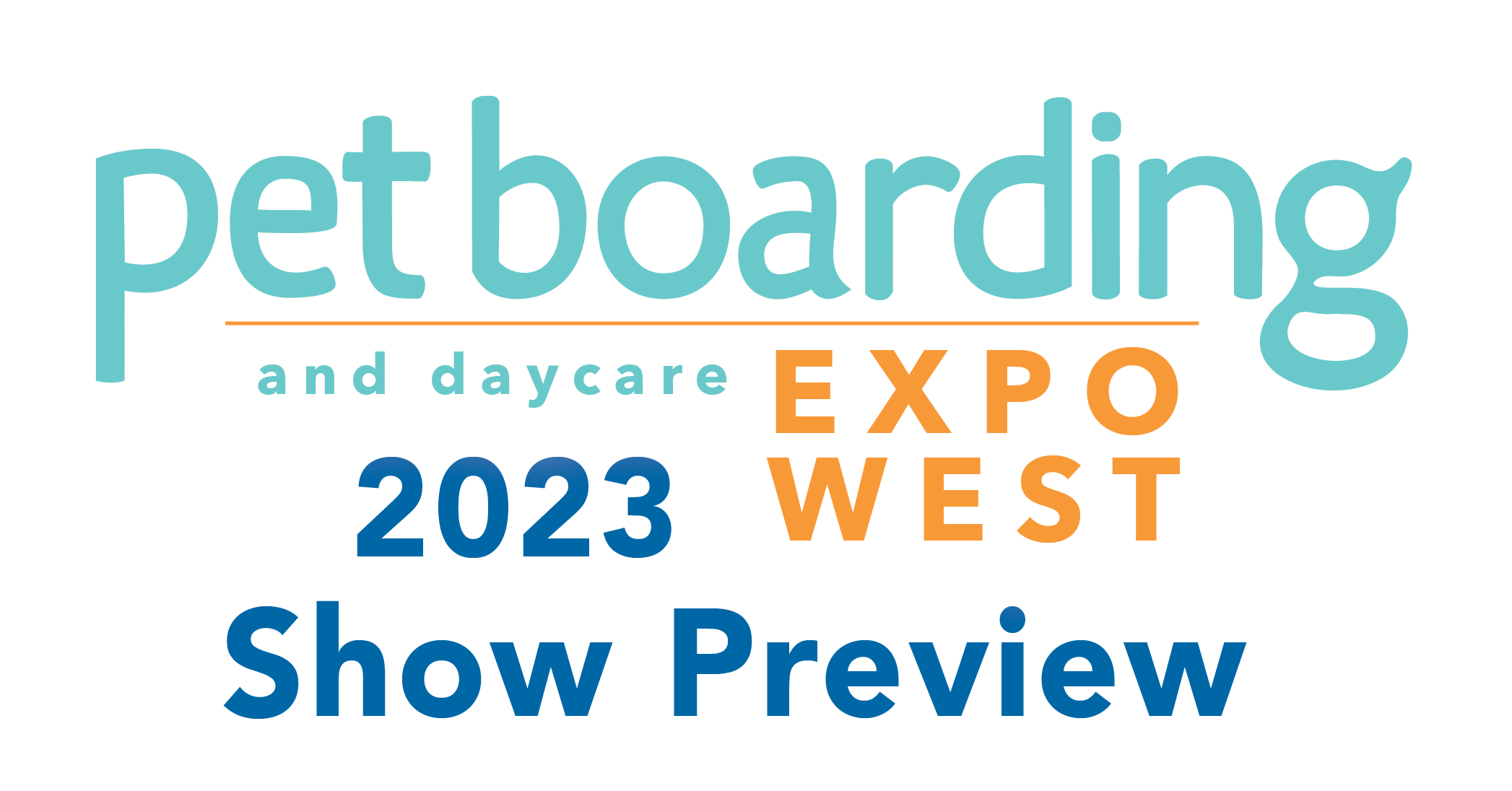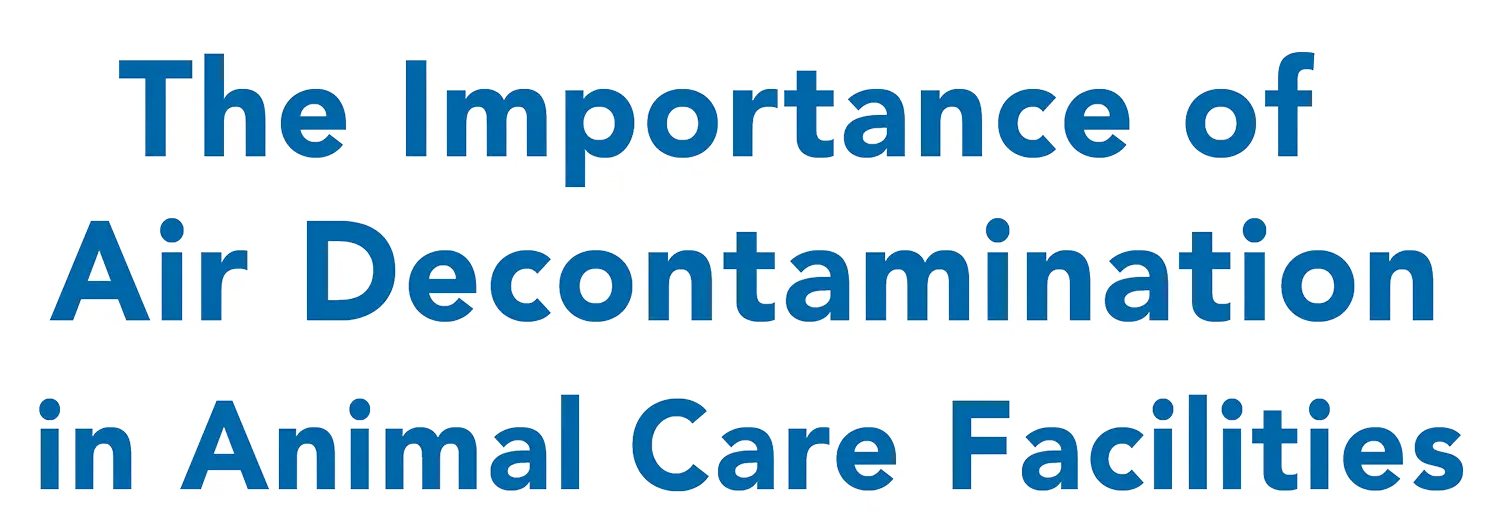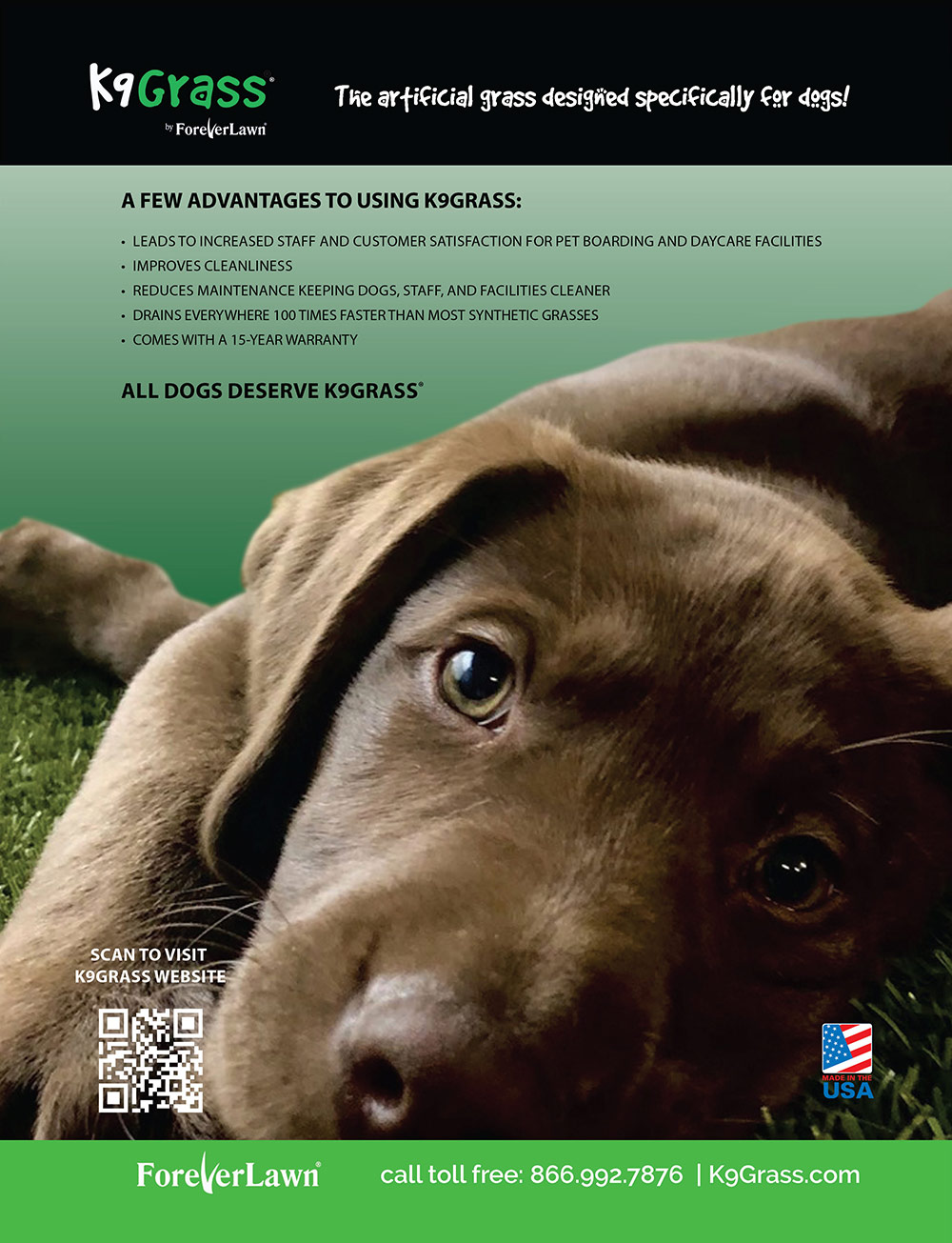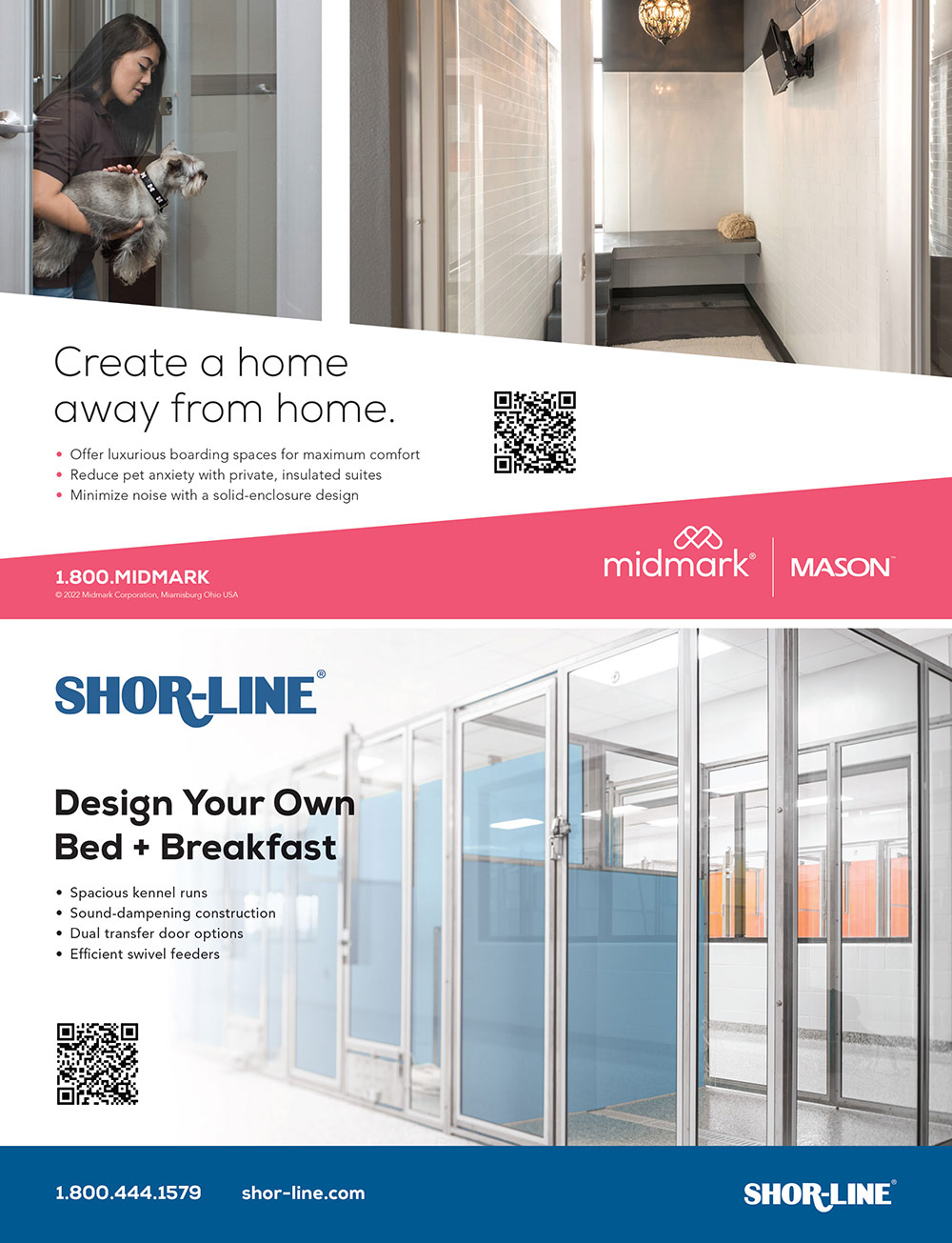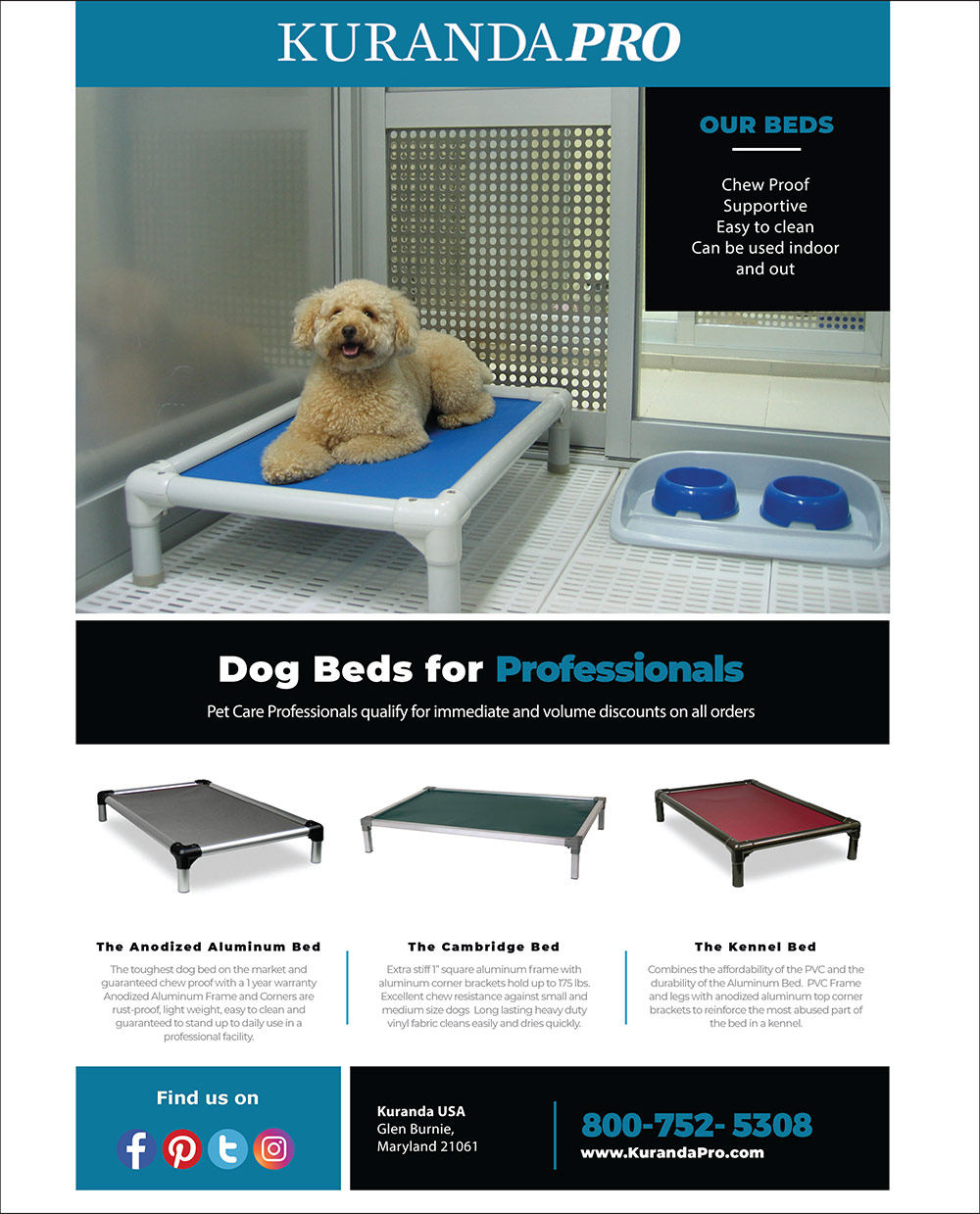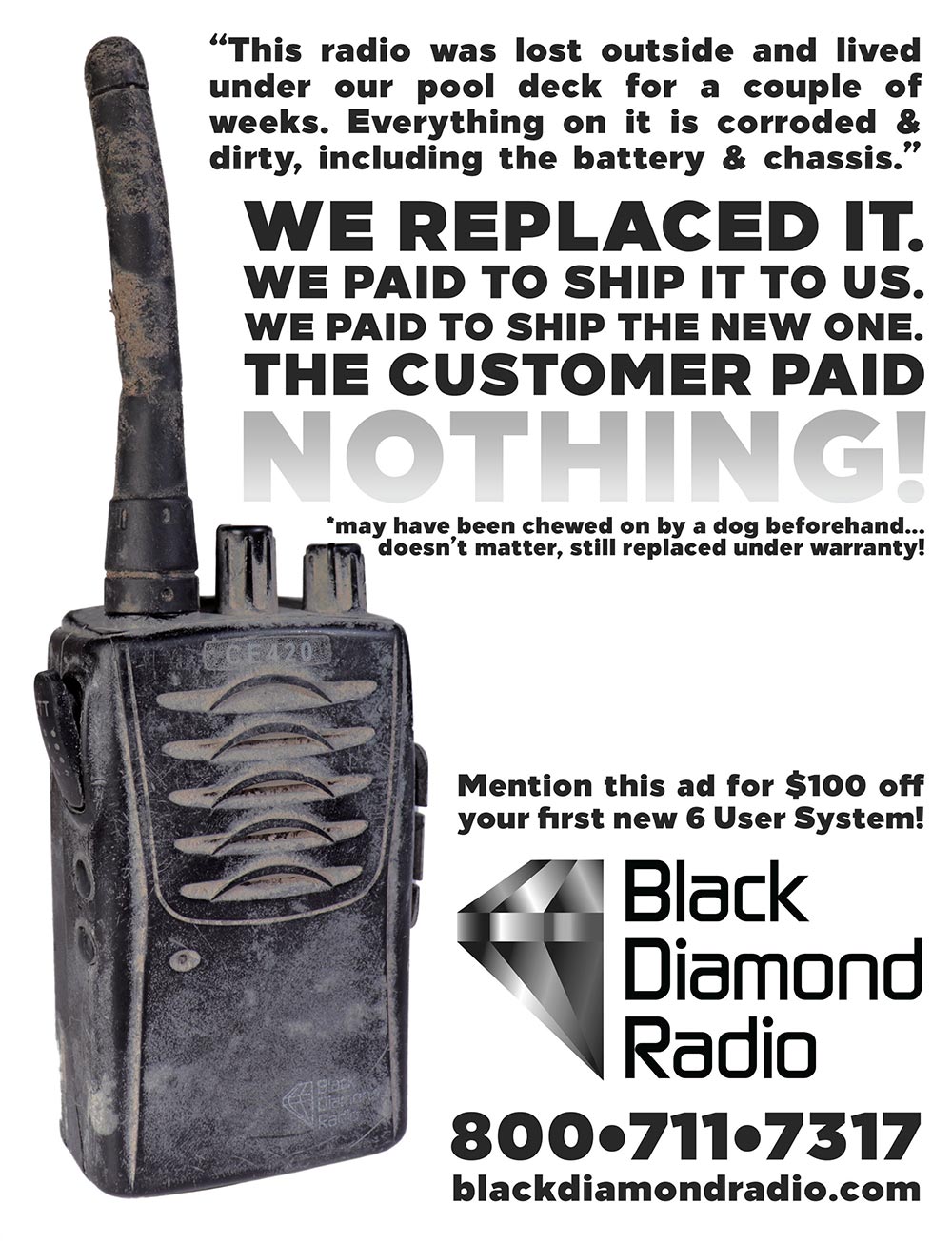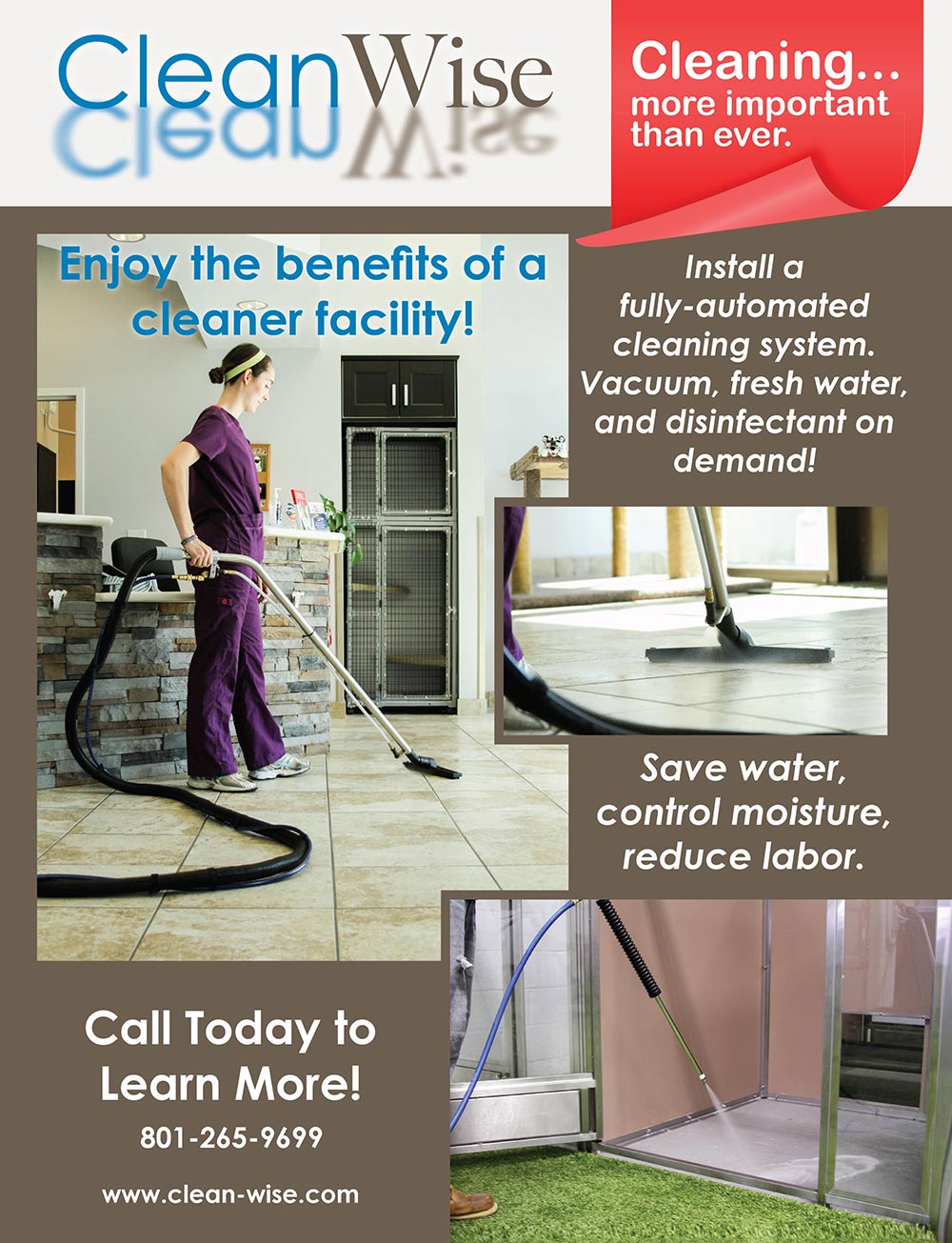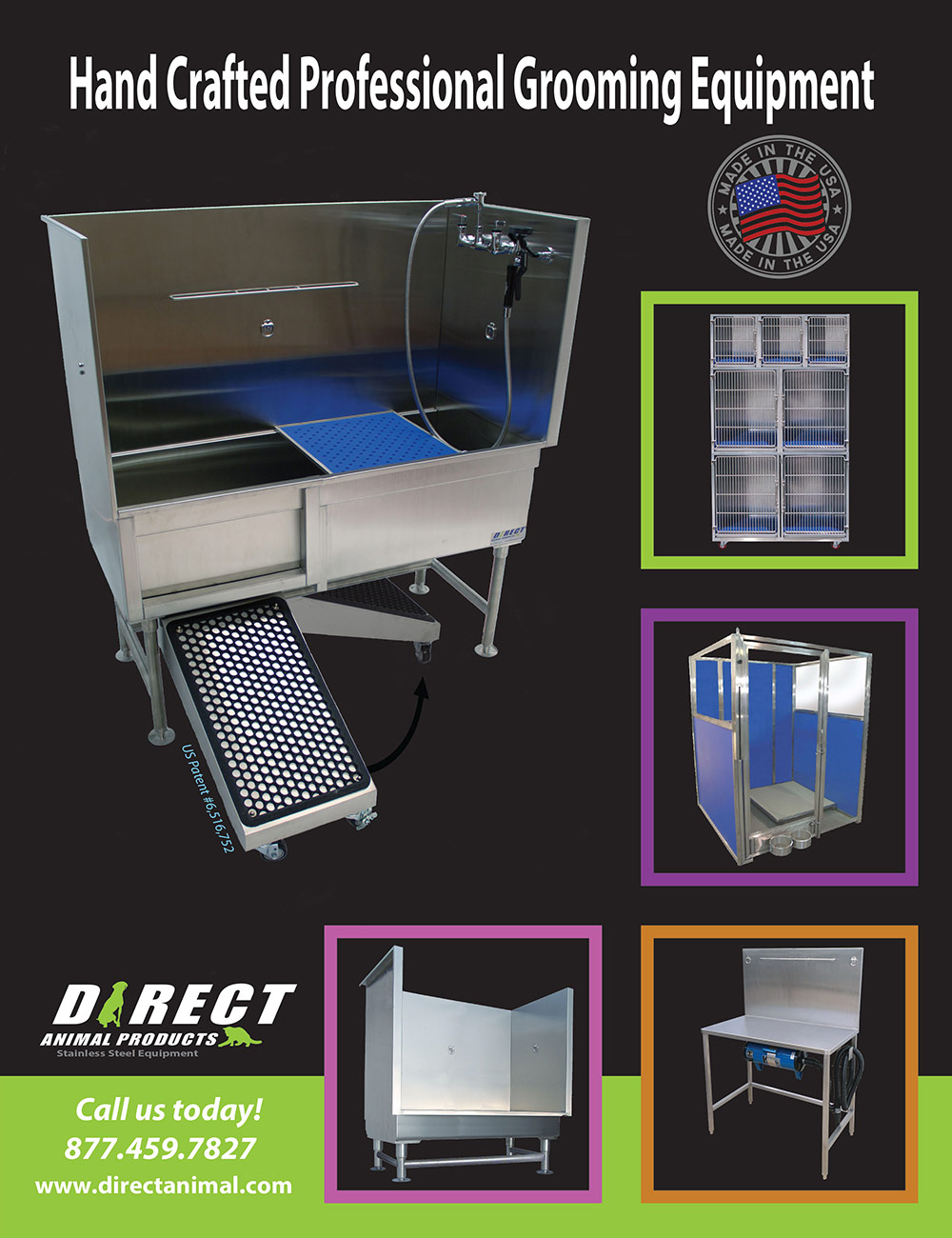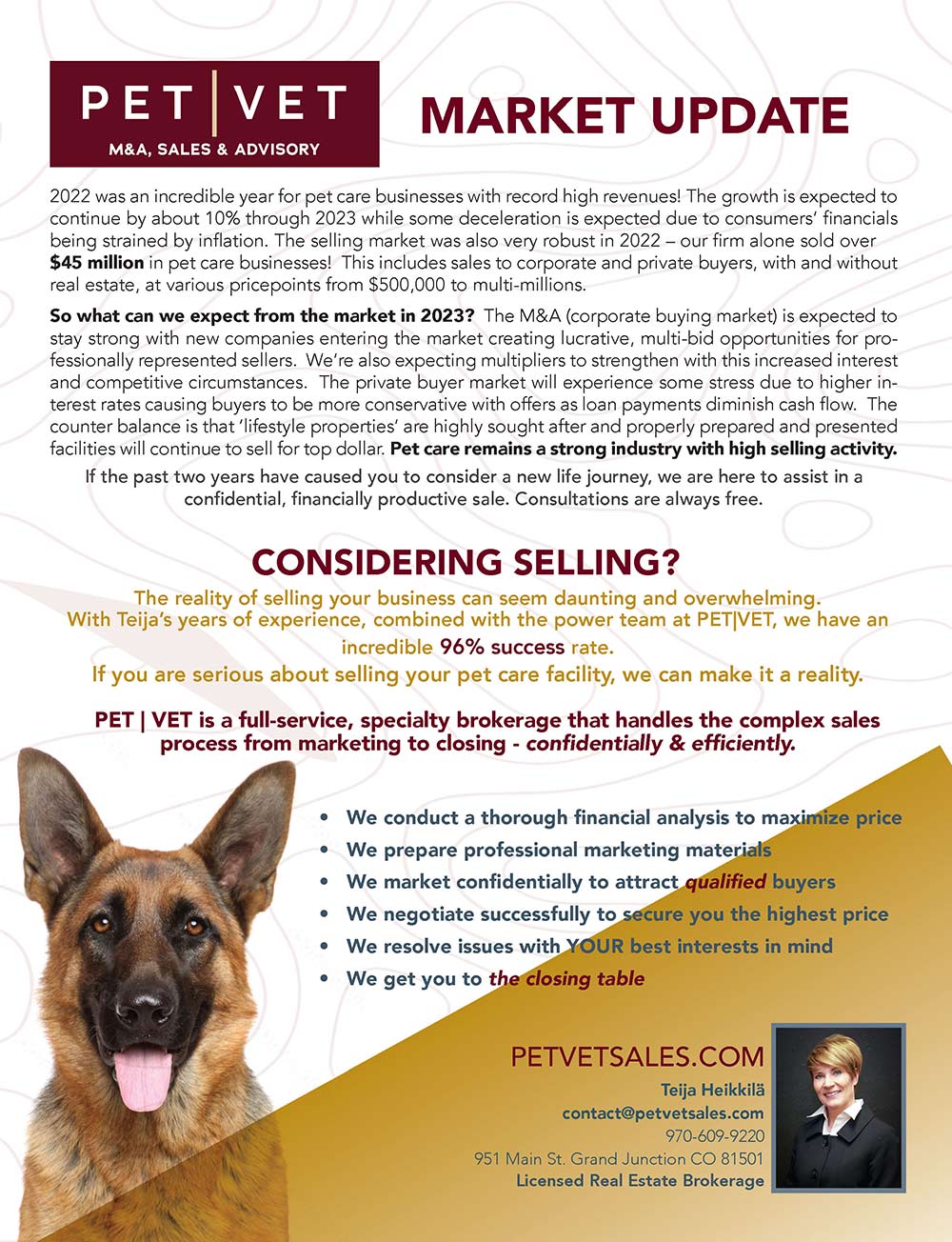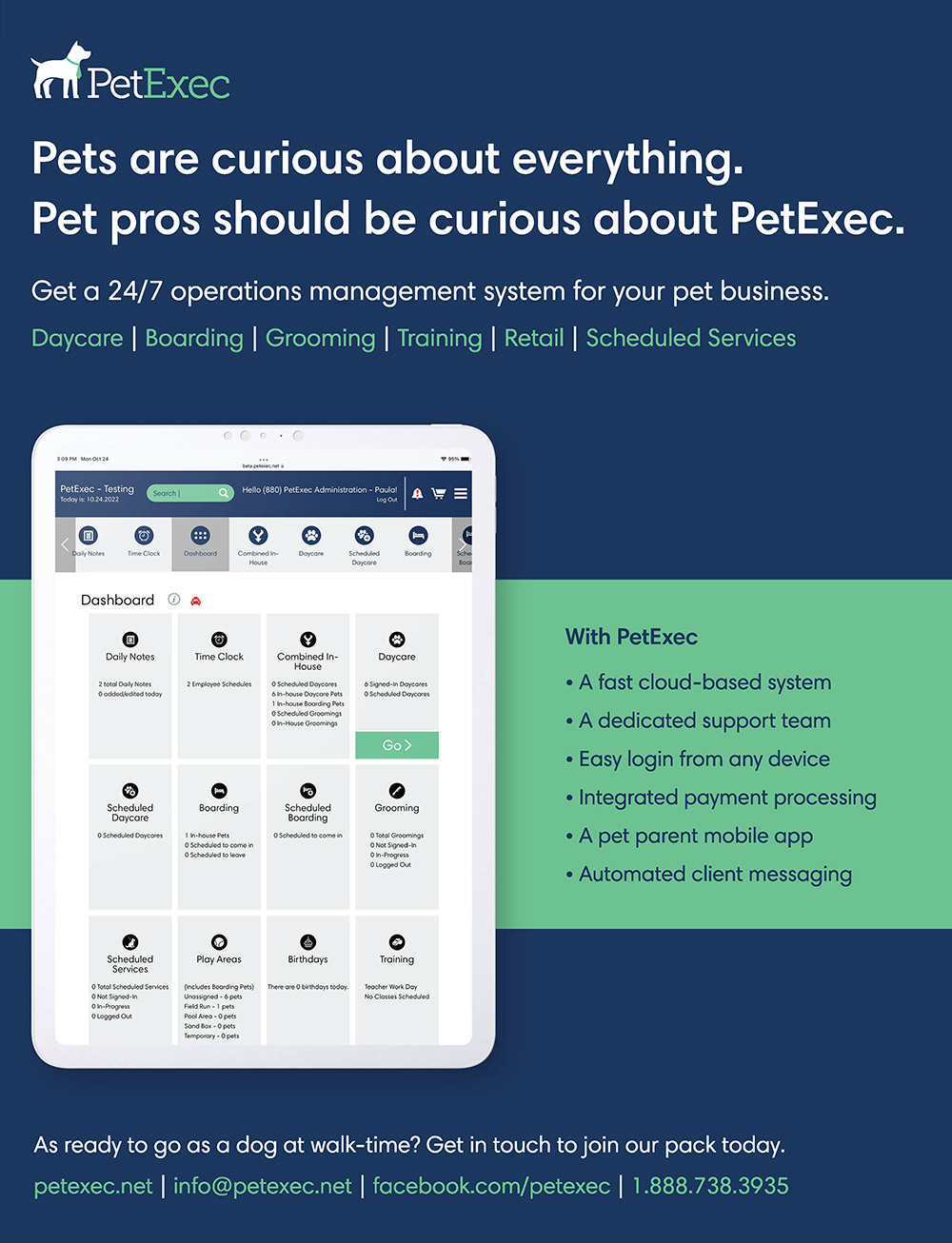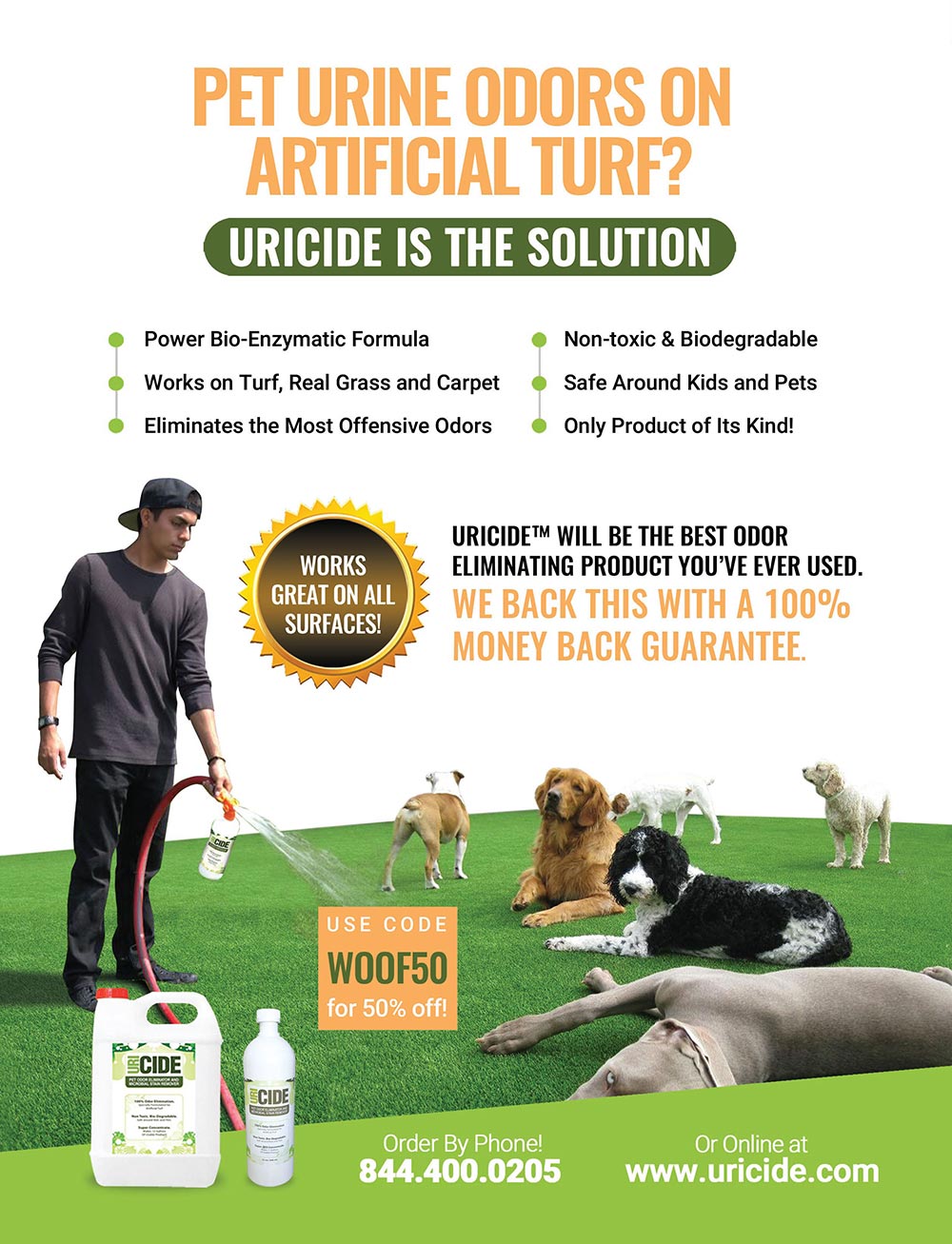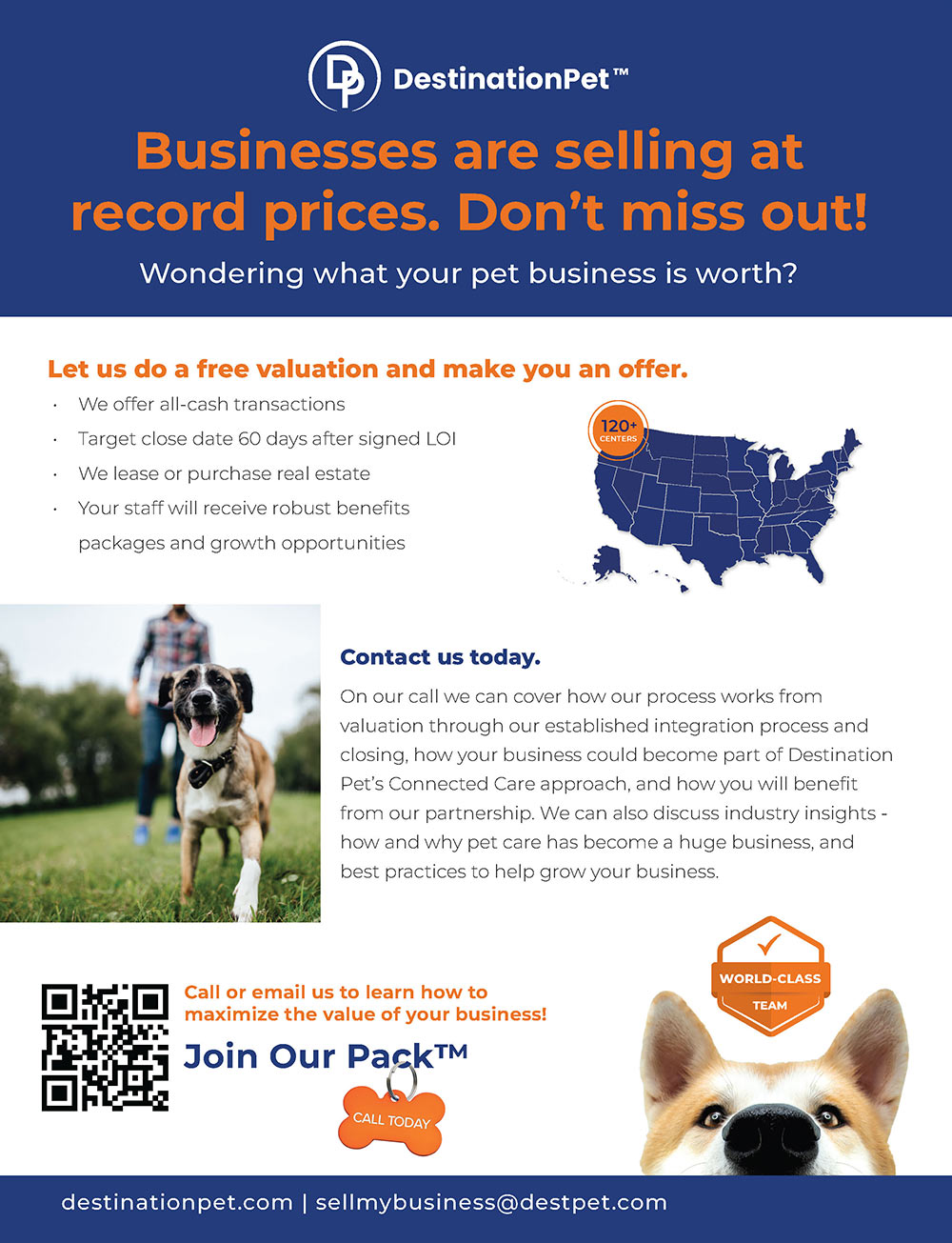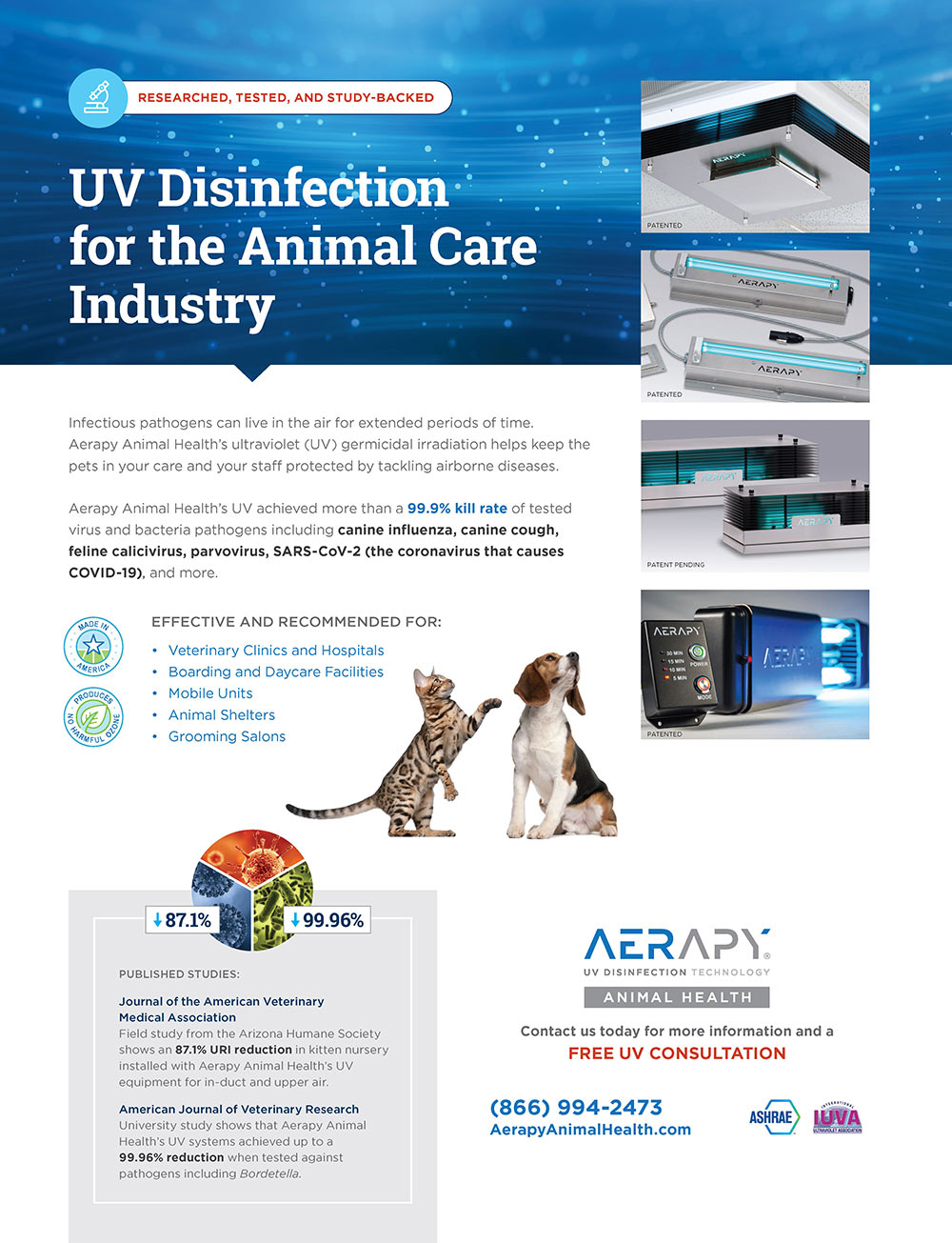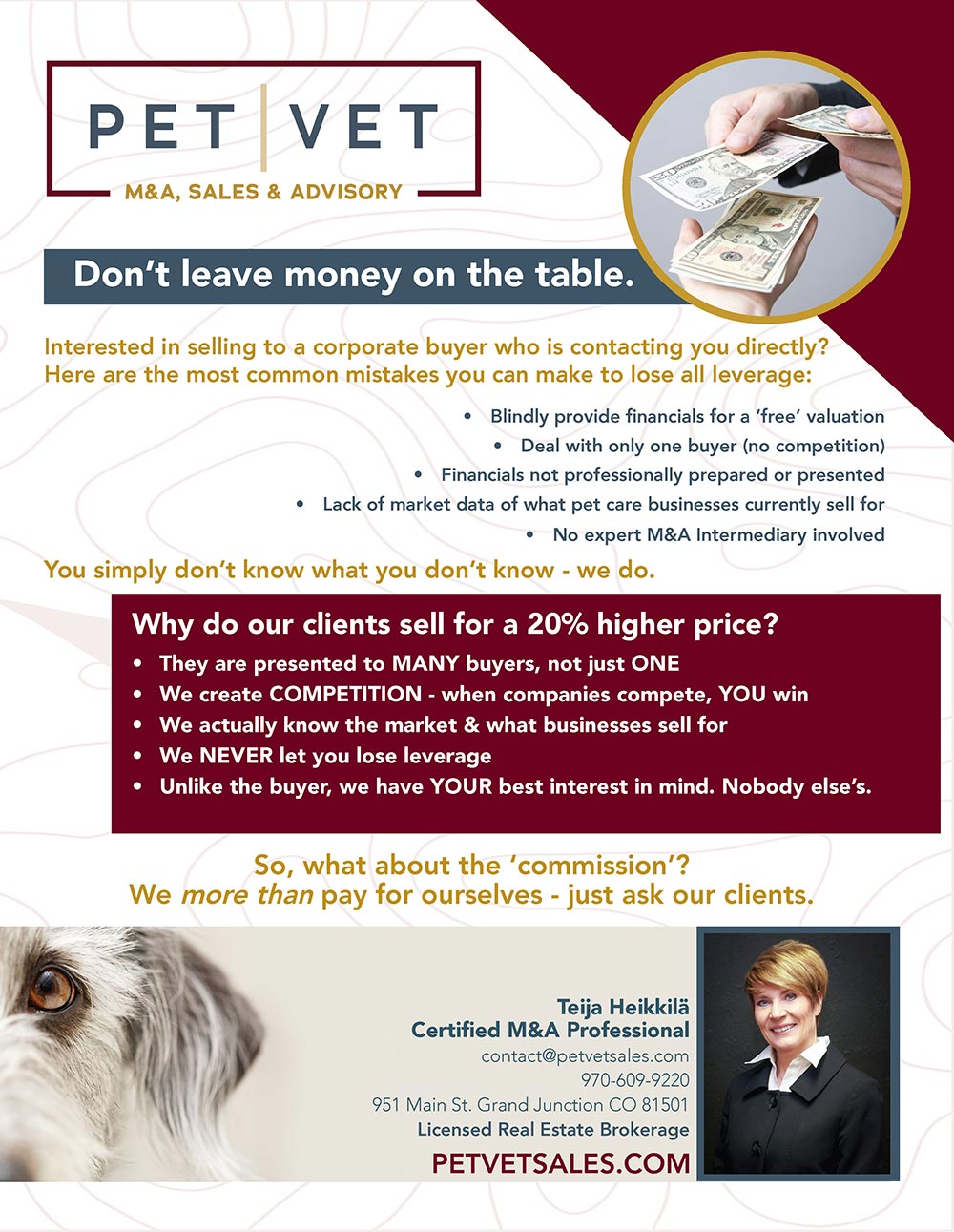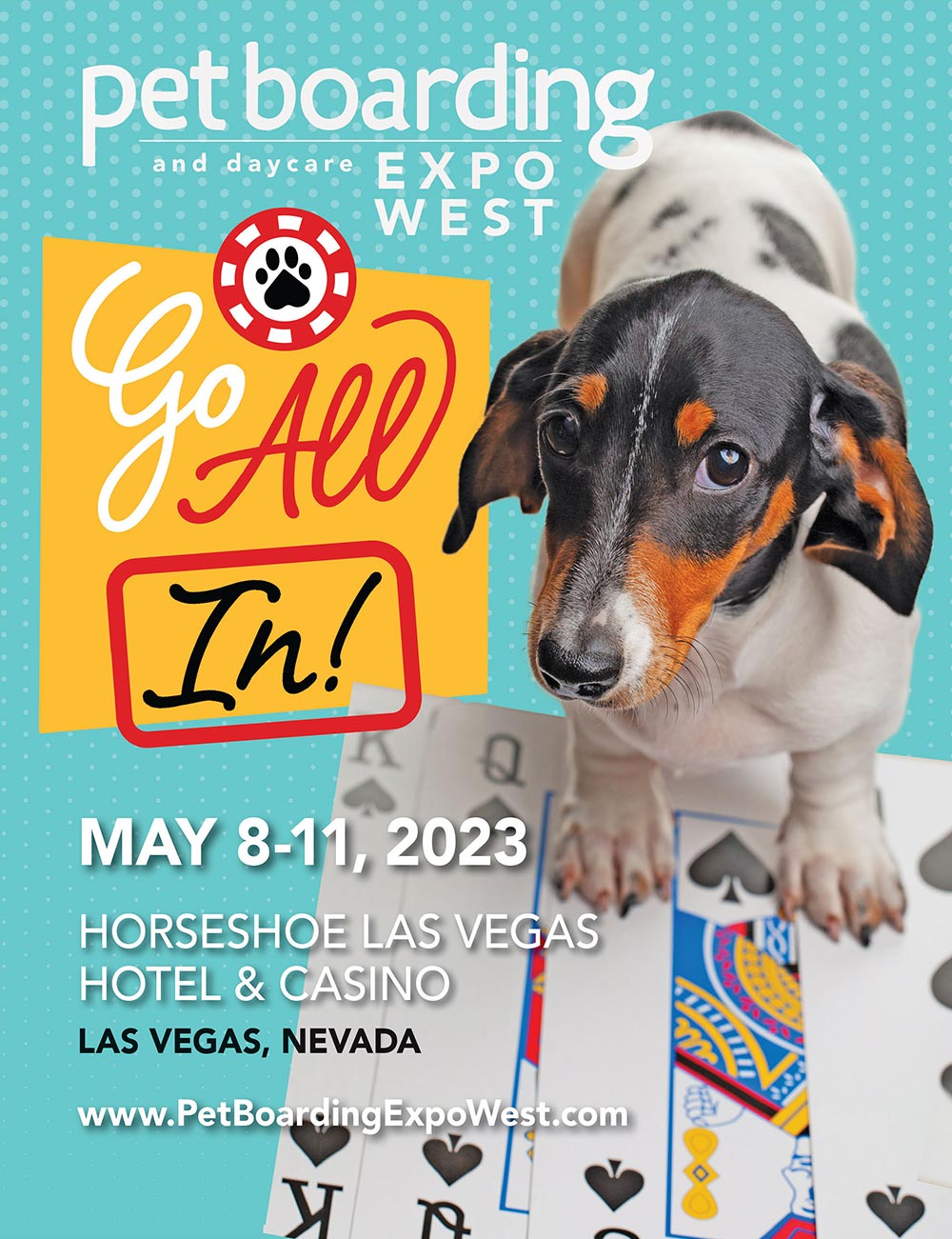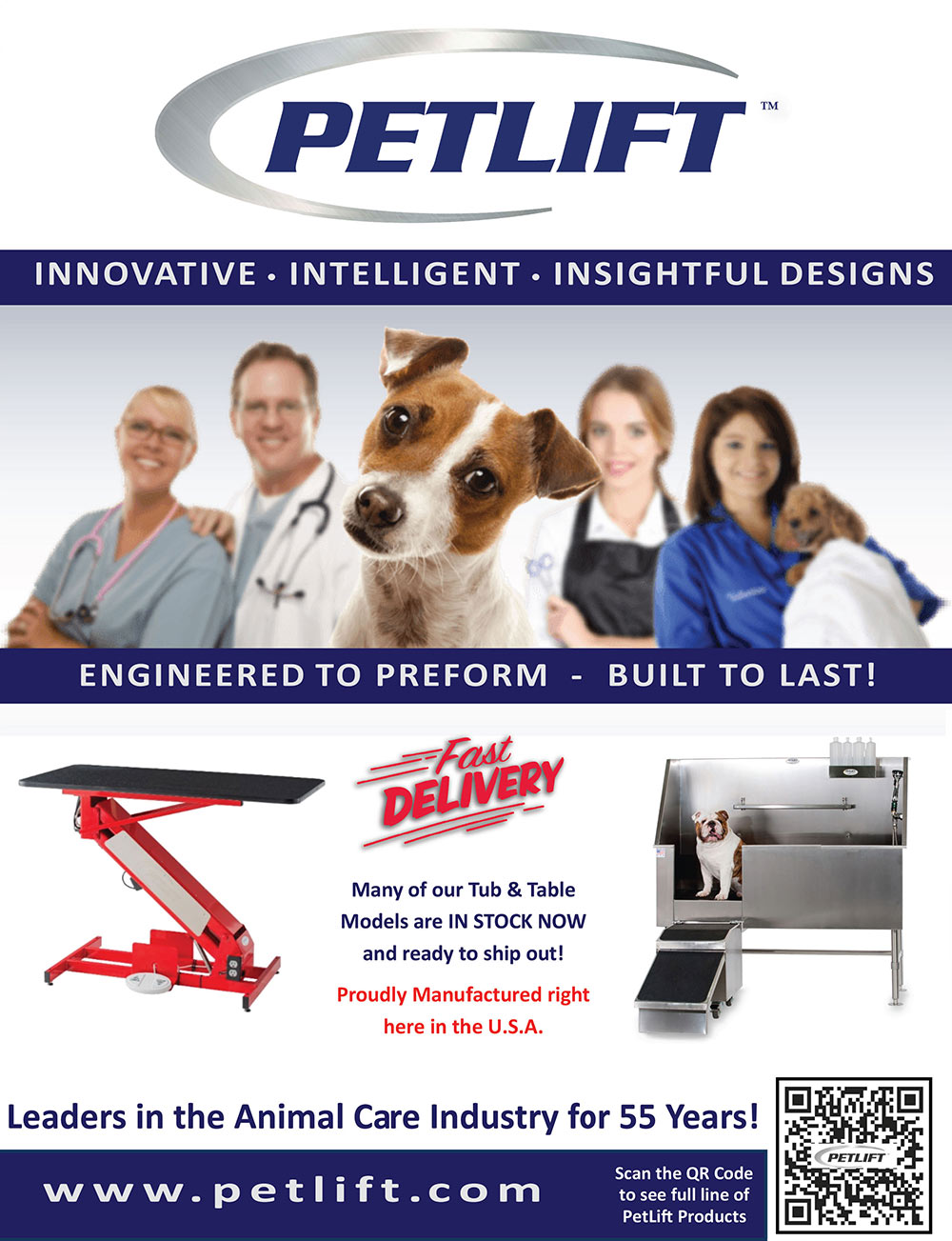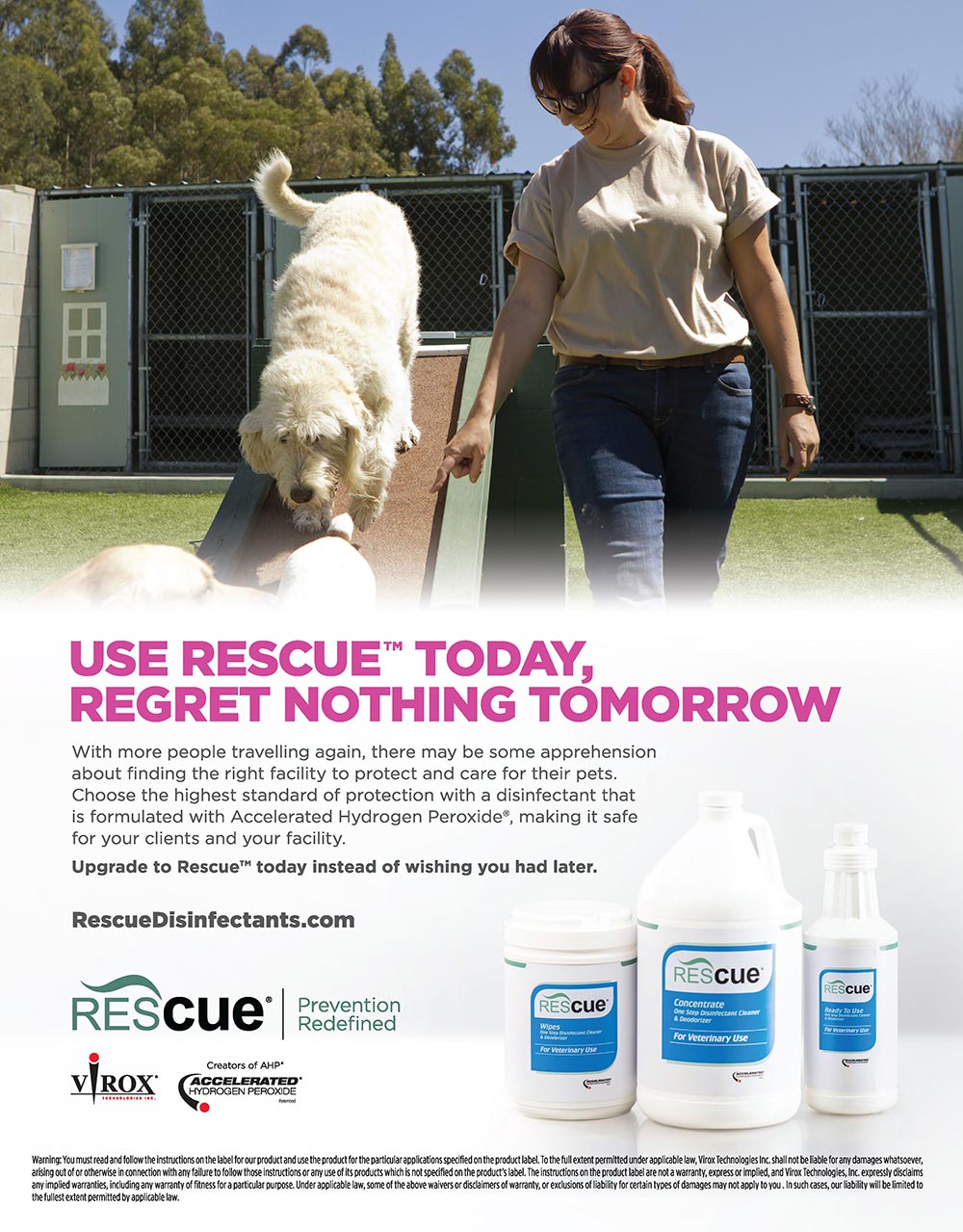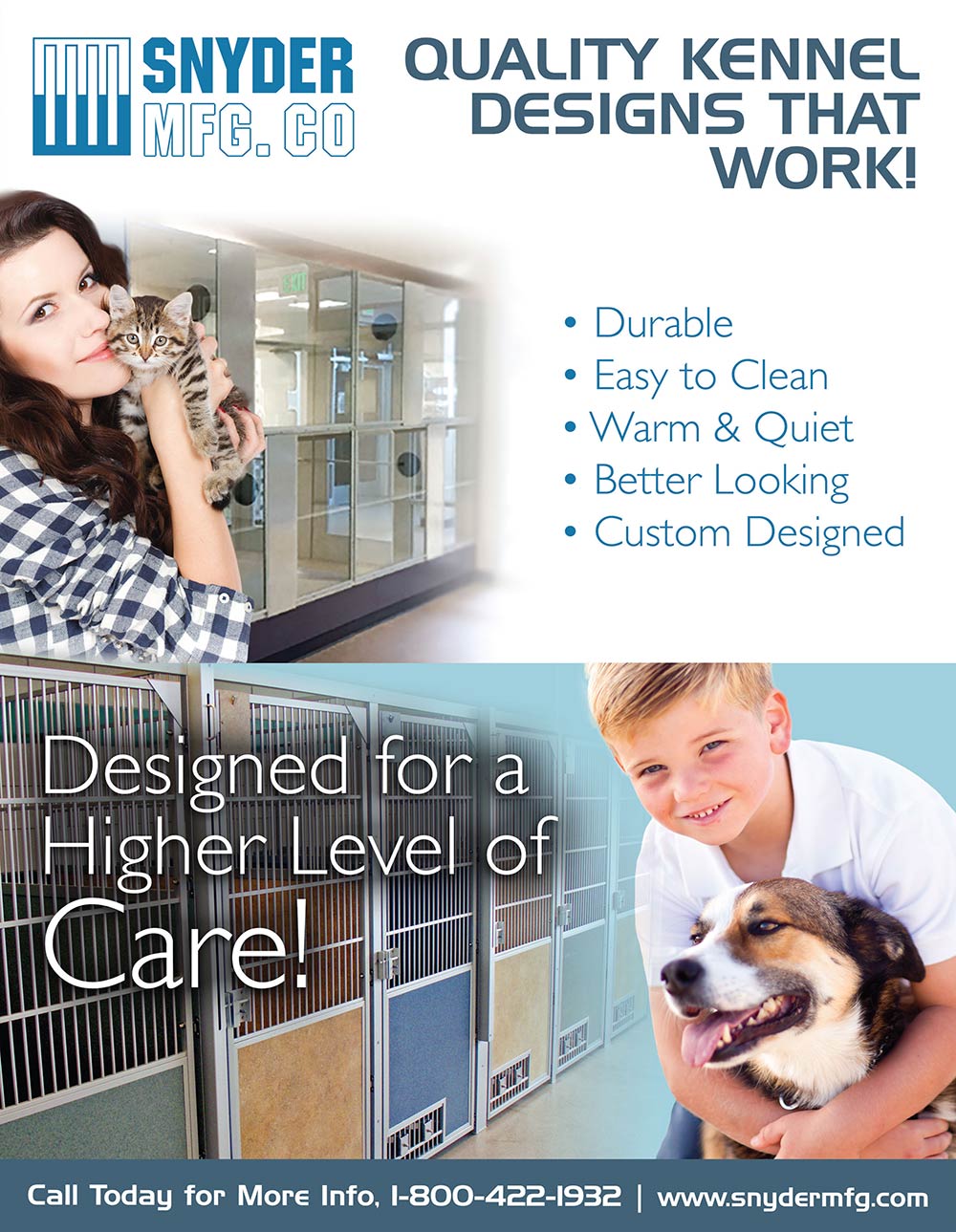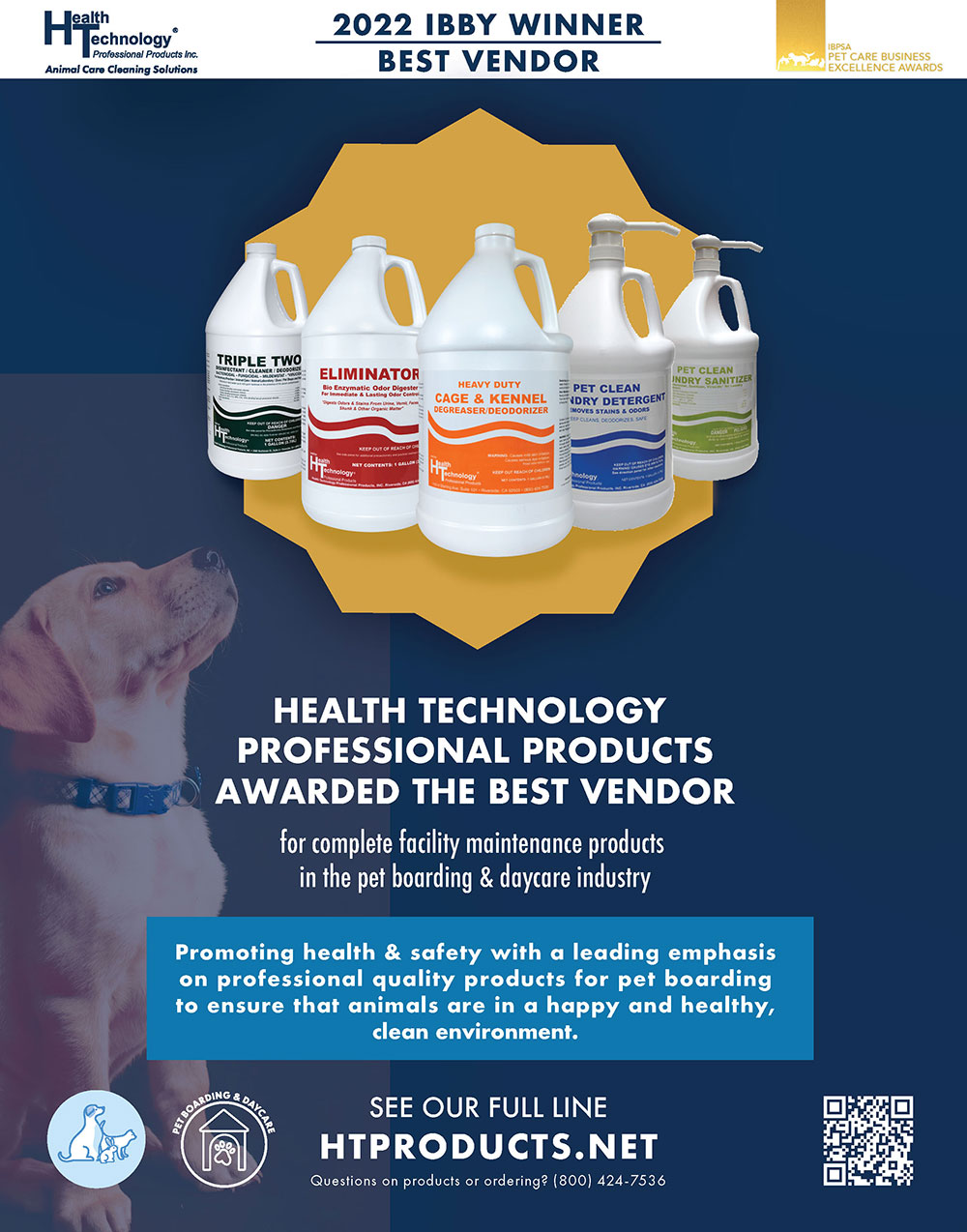Barkleigh Productions, Inc.
Rebecca Shipman
Laura Pennington
Brandi Aurelio
Luke Dumberth
Todd Shelly
Gwen Shelly
Adam Lohr
James Severs
Karin Grottola
Cassidy Ryman
Evan Gummo
CONTACT
General: (717) 691-3388
Editorial: rebecca@barkleigh.com
Advertising: james@barkleigh.com
Copyright March 2023. Pet Boarding & Daycare is published bimonthly by Barkleigh Productions, Inc, 970 West Trindle Road, Mechanicsburg PA 17055. Postmaster: Send change of address to Pet Boarding & Daycare c/o Barkleigh Productions, Inc., 970 West Trindle Road, Mechanicsburg PA 17055. No part of this publication may be reproduced without written permission of the publisher. Editorial offices: 970 West Trindle Road, Mechanicsburg PA 17055. (717) 691–3388 FAX (717) 691–3381 Email: info@barkleigh.com

30
Lucky Paws Pet Resort:
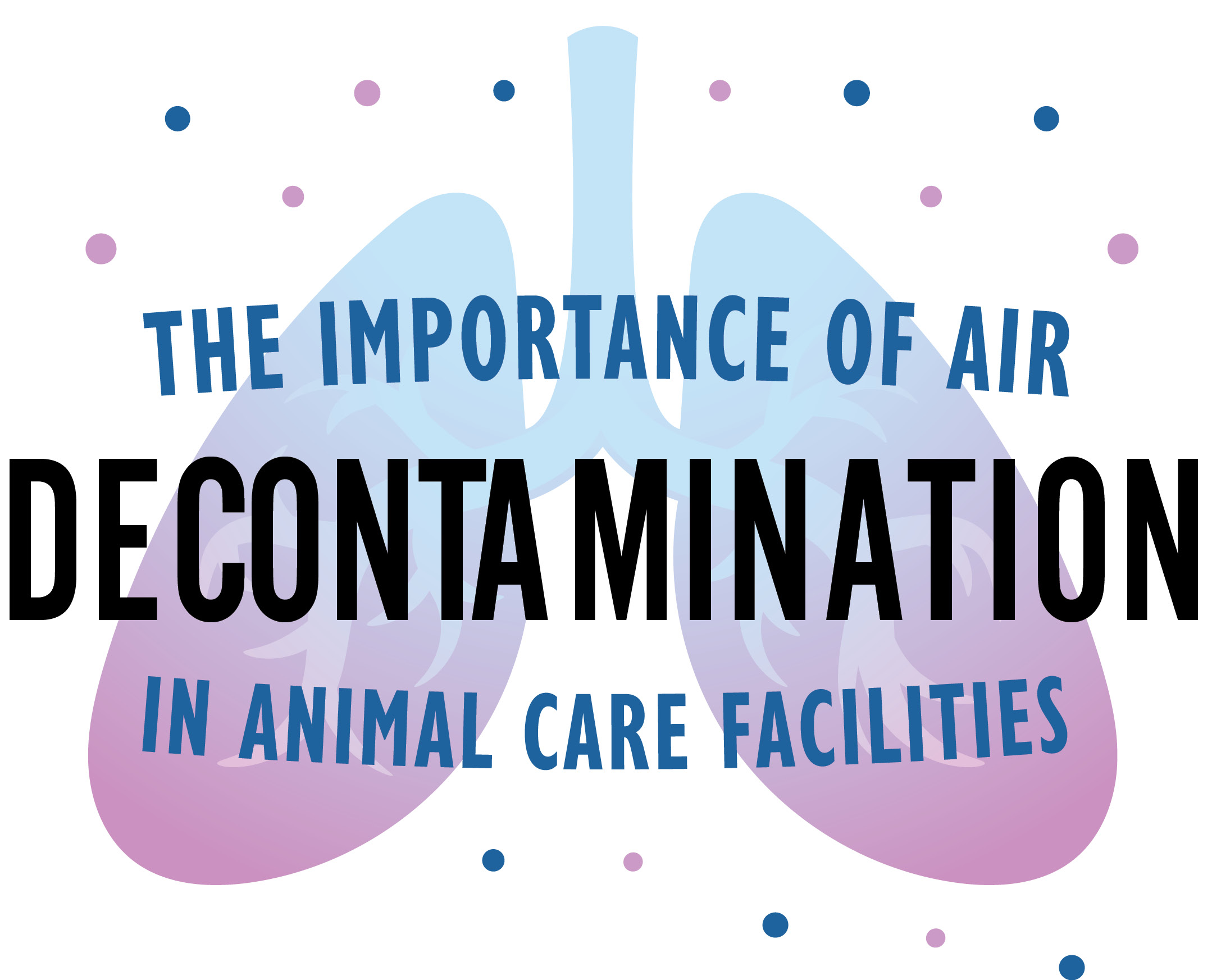
38
50
Animal Behavior

 very client thinks that they have the friendliest, most well-behaved, perfect baby in the world…and they do! However, some dogs just do not enjoy being in a group play situation. As an industry, we are seeing less and less “social” pets and more selective and human-play-centric dogs. So, instead of turning these less-social pets away, use this as an opportunity to educate the pet parent and offer an alternative that would be a better fit for their dog’s health and happiness—while also retaining the client!
very client thinks that they have the friendliest, most well-behaved, perfect baby in the world…and they do! However, some dogs just do not enjoy being in a group play situation. As an industry, we are seeing less and less “social” pets and more selective and human-play-centric dogs. So, instead of turning these less-social pets away, use this as an opportunity to educate the pet parent and offer an alternative that would be a better fit for their dog’s health and happiness—while also retaining the client!
There are three steps to take when delivering potentially tough news to a client: First, document your findings; next, initiate action; and finally, complete the process with clear communication of facts and options.



 he pet care industry can be incredibly rewarding and resilient. But, as you know, that doesn’t mean it’s all sunshine and butterflies, either. Almost all pet care business owners have at least one thing in common: When we got involved in pet care, we wanted to create something wonderful for pets and their people. We likely envisioned being surrounded by happy dogs and even happier customers. But, unfortunately, like in all businesses, unforeseen challenges pop up…
he pet care industry can be incredibly rewarding and resilient. But, as you know, that doesn’t mean it’s all sunshine and butterflies, either. Almost all pet care business owners have at least one thing in common: When we got involved in pet care, we wanted to create something wonderful for pets and their people. We likely envisioned being surrounded by happy dogs and even happier customers. But, unfortunately, like in all businesses, unforeseen challenges pop up…
Maybe just a few at first, or maybe a lot—but they tend to pile into something big, intimidating and maybe even suffocating. With employee issues, staffing shortages, inflation and building problems, owners can quickly feel consumed with so much on their shoulders…and in a recession, it’s even worse.
In pet care, success typically involves providing exceptional pet care and outstanding customer service while generating a healthy financial return. And in the pursuit of that, you can get swallowed up by every minor aspect of your business. The reality is, owners who remain too deeply embedded in the day-to-day operations tend to struggle and burn out.
Many of the most successful pet care facilities are owned by people who have experience or even owned businesses in other industries. This tends to provide a special perspective. They’ve seen how important it is to develop self-sufficient businesses and that their most valuable role is to act as the company’s conductor rather than its engine. So, if you’d like to take a step back, breathe and reclaim your life, read on.




 aving a strategy in place to help your community prepare then support those affected will make your business stand out and attract new clients. It is important to have a plan in place so that when an emergency does happen, you can act quickly and make financially wise decisions.
aving a strategy in place to help your community prepare then support those affected will make your business stand out and attract new clients. It is important to have a plan in place so that when an emergency does happen, you can act quickly and make financially wise decisions.
The first step in my emergency plan is educating the public on what to do in case of an emergency. I live in an area where there is a high probability of a major earthquake, and many of my clients live in areas that are routinely evacuated or have their electricity turned off due to wildfires. Over the years, as wildfires have gotten more destructive, evacuations and power shut-offs have become more aggressive. My education plan focuses both on what to do after an earthquake and preparing for an evacuation due to wildfires or an extended electricity shut-off.
After you identify the emergencies that are most likely to affect your community, it is time to start planning for your educational social media campaign. While you may focus on one scenario, like a wildfire or hurricane, readers can easily apply those strategies to other emergencies in their lives.
Once you determine the type of emergency you want to focus on (flood, hurricane, tornado, wildfire, etc.), write out a list of suggestions to create a social media campaign. In my business, I focus on these key topics:


By Eve Molzhon
 he question of whether to add retail or not to add retail is a heavy one. It takes space and a lot of time to research what products you want to have, and also time in maintaining inventory and placing orders. Businesses can make their retail area as big and bold or as small and quaint as they desire.
he question of whether to add retail or not to add retail is a heavy one. It takes space and a lot of time to research what products you want to have, and also time in maintaining inventory and placing orders. Businesses can make their retail area as big and bold or as small and quaint as they desire.
One key thing to think about is how close other animal retail stores are to your business. If there are a couple of big-box stores within a few minutes of your facility, maybe shift your focus to more unique or local, homemade items. If there isn’t a box store within 15-20 minutes, you can try offering some more generalized items. This will label your business as more of a convenience since the client is already coming to you for daycare or boarding services for their pet, so giving them the option to also buy food, treats, etc. from you makes your business their onestop pet place.
It’s not necessary to carry 20 different kinds of dog food. One or two brands that your business personally utilizes and endorses are good to have. Offering both small bags and large bags is beneficial. The small bags can be sold to somebody who accidentally forgot their dog’s food when they dropped them off for boarding, and the big bags are what recurring clients are going to purchase from your business because your business has endorsed that brand as an animal expert and it’s convenient to buy when they pick their dog up from daycare or boarding.
If your facility doesn’t have room for dog food, then you may consider offering bones. (Dogs always need those for their boarding stay.) Some durable, tough toys are also a good idea. Or, if your facility is near a body of water, floaty toys would be good. But remember, you don’t need to buy 50 of them; buy five to sell and see how they go. Gauge your retail space based on the sale of the product.
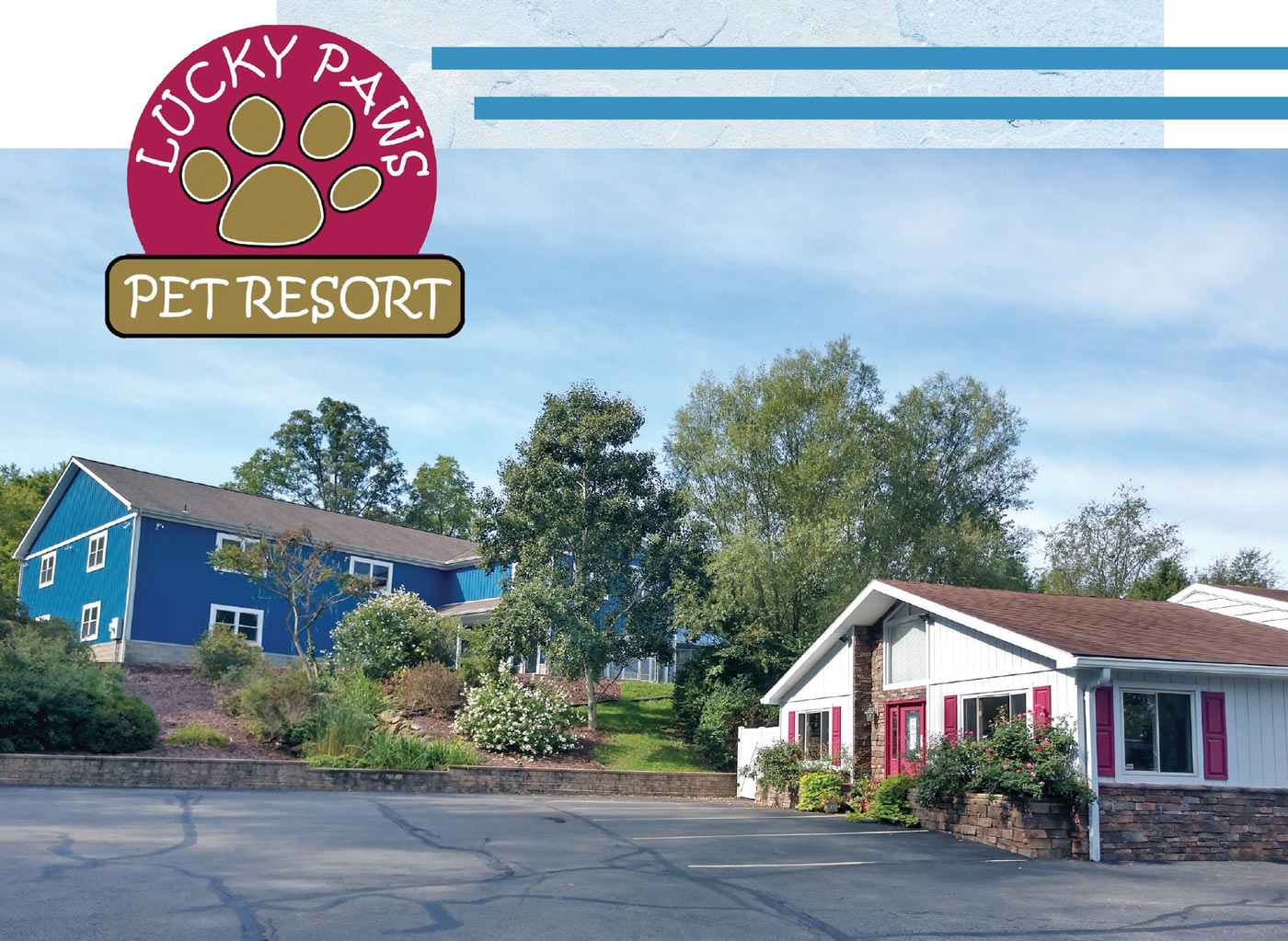



Photos by Lucky Paws Pet Resort

 t’s all about the pets here at Lucky Paws Pet Resort,” says owner, Gretchen Fieser, enthusiastically. “Their care, safety, and happiness is number one with us. If we do right by the pets, everything else will fall into place.
t’s all about the pets here at Lucky Paws Pet Resort,” says owner, Gretchen Fieser, enthusiastically. “Their care, safety, and happiness is number one with us. If we do right by the pets, everything else will fall into place.
“I love to be able to share the owner’s joy when they see their dog run and play off-leash, enjoying our pool, dog park, and other amenities in a safe, controlled environment,” Gretchen adds.
Lucky Paws Resort is a canine and feline paradise located on four beautiful acres in Freedom, Pennsylvania, and the guests of the resort really are “lucky.” They stay in luxury suites complete with private patios, romp and play in the wonderful indoor/outdoor dog park, and have the time of their lives splashing in the custom-designed swimming pool. And, that is just the beginning of the activities and pampering that they enjoy at the resort.
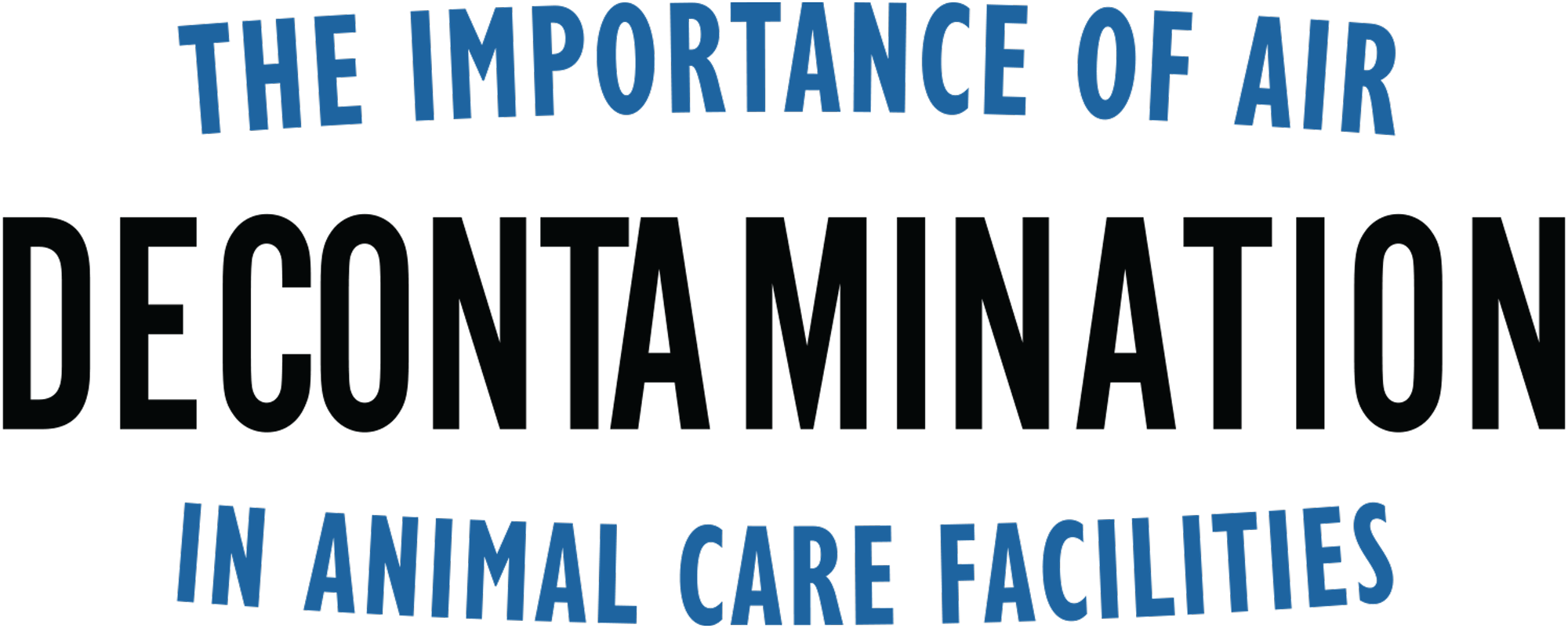
By Lucas Pantaleon, DVM, MS, DACVIM, MBA
& Chama Gomez, RVT-R, BD
 lean air is a basic requirement of life. The quality of indoor air, where people and pets spend a significant part of their lifetime, is essential to their overall health and wellbeing.
lean air is a basic requirement of life. The quality of indoor air, where people and pets spend a significant part of their lifetime, is essential to their overall health and wellbeing.
There is an ongoing debate as to whether indoor air should be regulated in the same way as drinking water and outdoor air pollution. Consider that in any given setting, one may choose not to drink the water or eat the food that is available, but generally has little choice in breathing the same air as everyone else. This makes air an environmental equalizer, with the potential to rapidly disperse whatever it may contain—including infectious pathogens. This highlights the importance for improving indoor air quality and reducing the exposure to both pollutants and pathogens.
Buildings have long been associated with disease outbreaks in both humans and animals. The amount of time people and/or their pets remain indoors in close contact is a main contributor for disease transmission. Sources for indoor microbes include aerosols from people or animals, pathogen aerosolization from biofilm and resuspension of pathogen reservoirs such as dust. Airborne diseases, including canine and feline viral respiratory diseases, SARS-Covid2 and influenza viruses, can spread through the air. Enclosed, crowded and poorly ventilated environments such as animal shelters, boarding facilities and veterinary hospitals are prone to experience outbreaks of respiratory diseases.
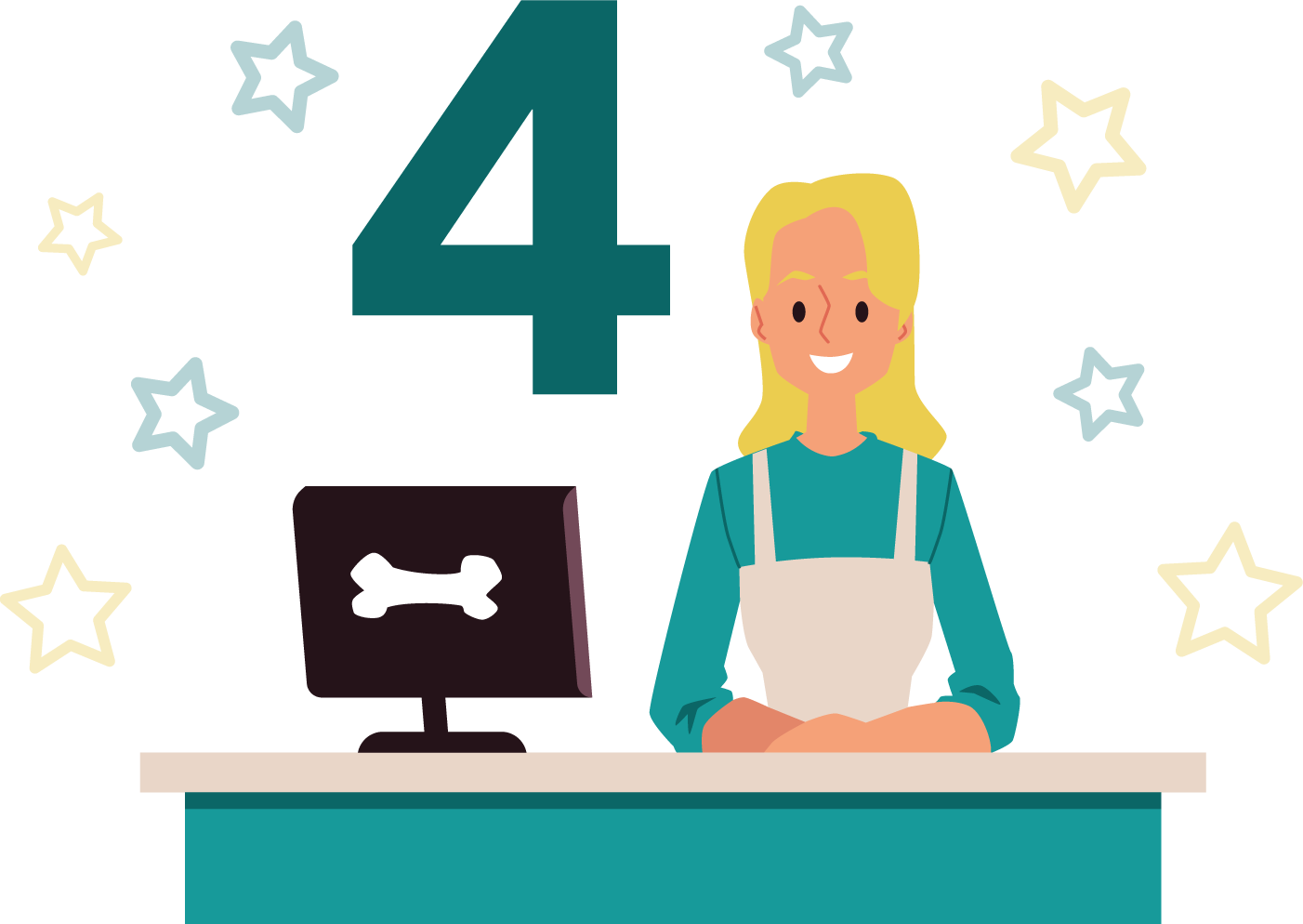
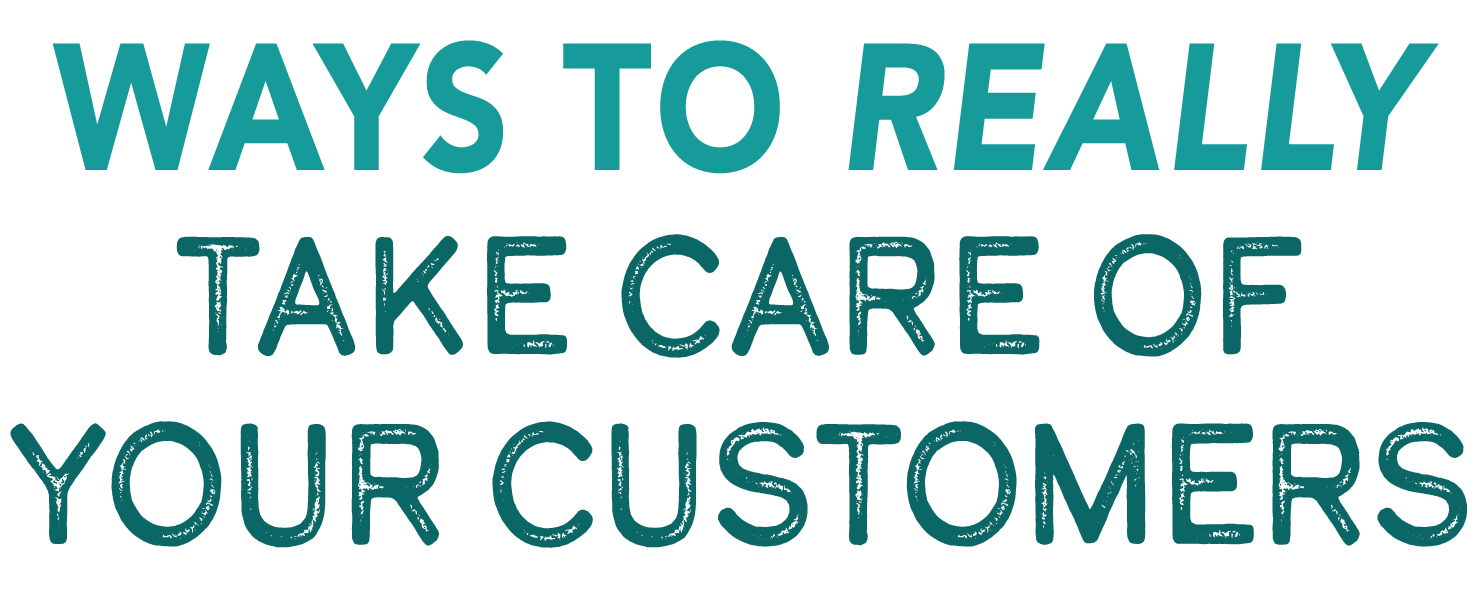
 our business is nothing without your customers. They are your lifeblood, and without them you would be forced to close up shop and give up on your entrepreneurial dreams.
our business is nothing without your customers. They are your lifeblood, and without them you would be forced to close up shop and give up on your entrepreneurial dreams.
You already know this though, right?
Of course you do. So, the real question is, are you really doing a good job of taking care of them at a level that is indicative of something so critical to the livelihood of your business?
Despite whether your answer is “Yes,” “No” or “Possibly,” there is always room for improvement! Here are four ways to up your customer-care game and get people to use your services more often:



We have all felt stress at some point in our lives, and we’ve seen dogs and cats exhibit signs of being stressed—especially those in our boarding facilities. Dealing with a change in routine and environment can cause pets to experience stress and a change in behavior.
Biology classes often teach the “fight or flight” theory. In this postulate, an animal that senses danger makes a decision to flee to get away from the stress, or to fight to stay alive. This stress reaction, in either case, changes the body status significantly to enable the animal to either get away safely or to fight hard enough to survive.
Once the brain perceives a stressful situation, the pituitary gland releases ACTH (adrenocorticotrophic hormone) into the bloodstream, which circulates through the body to the adrenal glands. All mammals have two adrenal glands, one on each side of the body, located near the kidneys. The adrenal glands secrete hormones and cortisone.
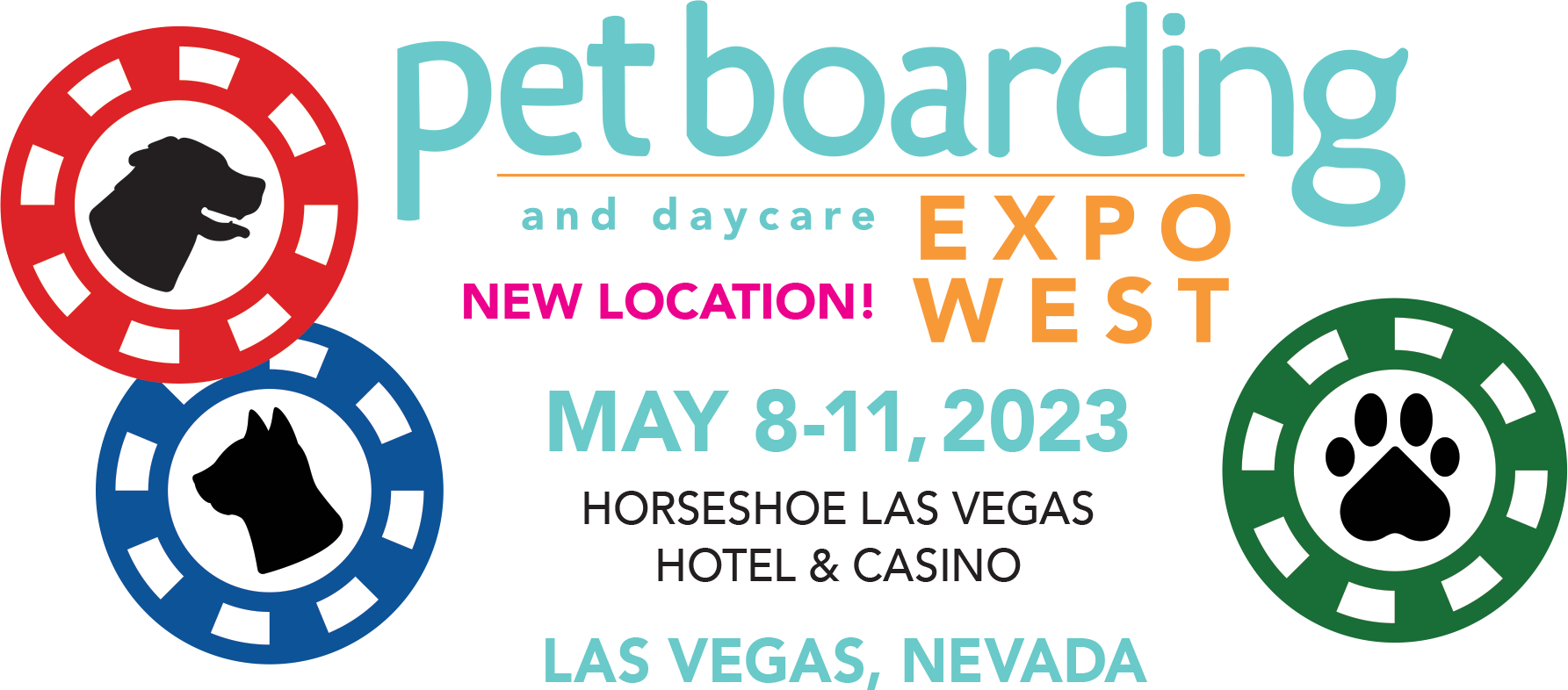
 et ready to “go all in” at this year’s Pet Boarding & Daycare Expo West! With the exciting new location of the Horseshoe Las Vegas Hotel and Casino, right on the Las Vegas strip, this is one industry event not to miss.
et ready to “go all in” at this year’s Pet Boarding & Daycare Expo West! With the exciting new location of the Horseshoe Las Vegas Hotel and Casino, right on the Las Vegas strip, this is one industry event not to miss.
An alluring line-up of industry experts, including some brand new faces, will come together to share their expertise and words of wisdom on every aspect of running or working in a pet care business. You’ll hear from veterinarians, dog trainers, builders, marketing experts, financial advisors, lawyers, facility owners and more!
With the continued challenges of hiring and retaining a great staff being felt in all industries, the pet care industry is certainly no exception. That’s why this year’s education has more seminars than ever that focus on hiring, training and managing staff.
Speaking of staff—don’t forget to sign them up, too! Education is also offered for those in entry-level pet care positions with topics like dog behavior, customer service and cleaning being covered.
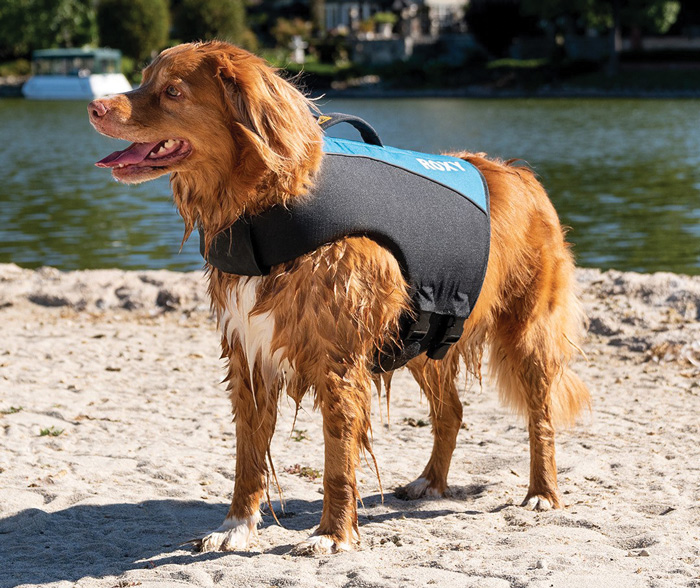
We set out to create a dog life jacket that holds up to our standards of durability, comfort, and sustainability. Our signature Tough Rip-Stop™ fabric lines the outside to provide resistance against abrasions and splashes, while retaining breathability for quick drying and natural airflow.
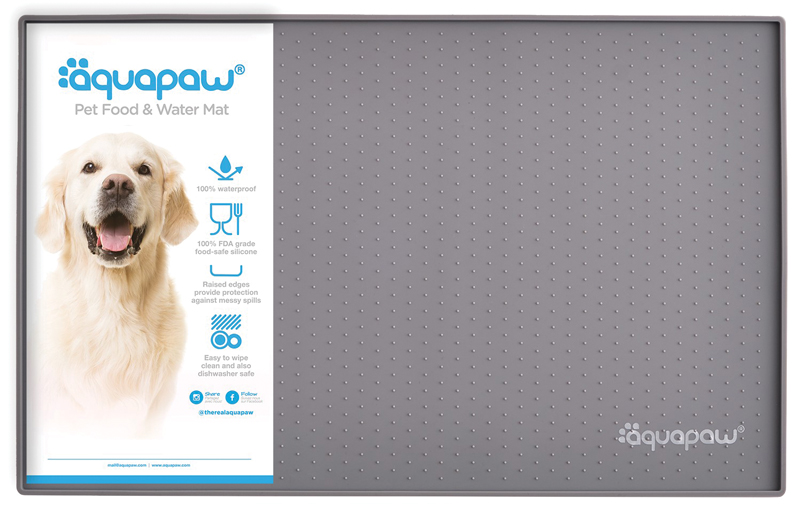
The drool, the spilled water dish, the bits & pieces of food—it’s an unfortunate downside of caring for pets. But, with the Aquapaw Pet Feeding Mat, messes and spills can be kept at bay! The raised edges contain spills, keeping floors clean and dry. It’s also 100% waterproof, so nothing soaks through. The mat’s grippy top surface keeps bowls from sliding around, and it’s dishwasher safe.




